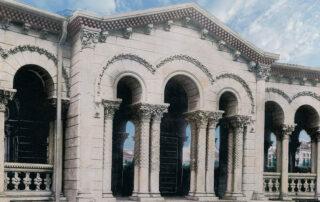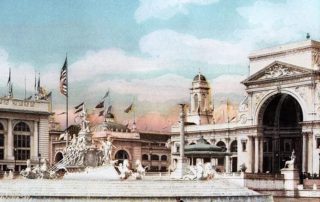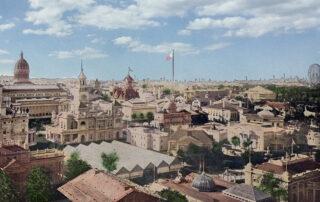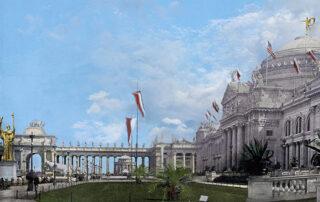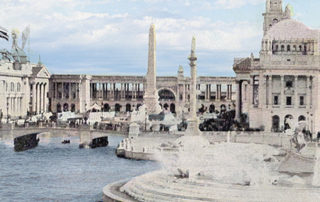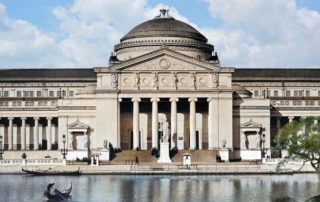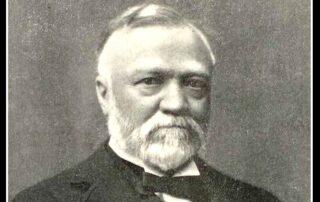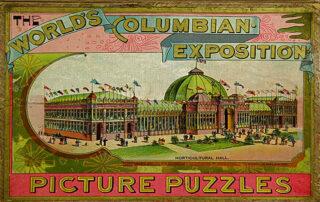160. Picturesque World’s Fair – Entrance to Fisheries Arcade
ENTRANCE TO FISHERIES ARCADE.—The Fisheries Building, because of the peculiar form of the site to which it was relegated, consisted of a rectangular central structure connected by curved arcades with circular pavilions on either side. The view here given is that of an entrance to one of the connecting arcades, and affords an excellent idea of the graceful and novel decoration resorted to in this structure, together with an example of mechanical duty performed too well. The columns of [...]

